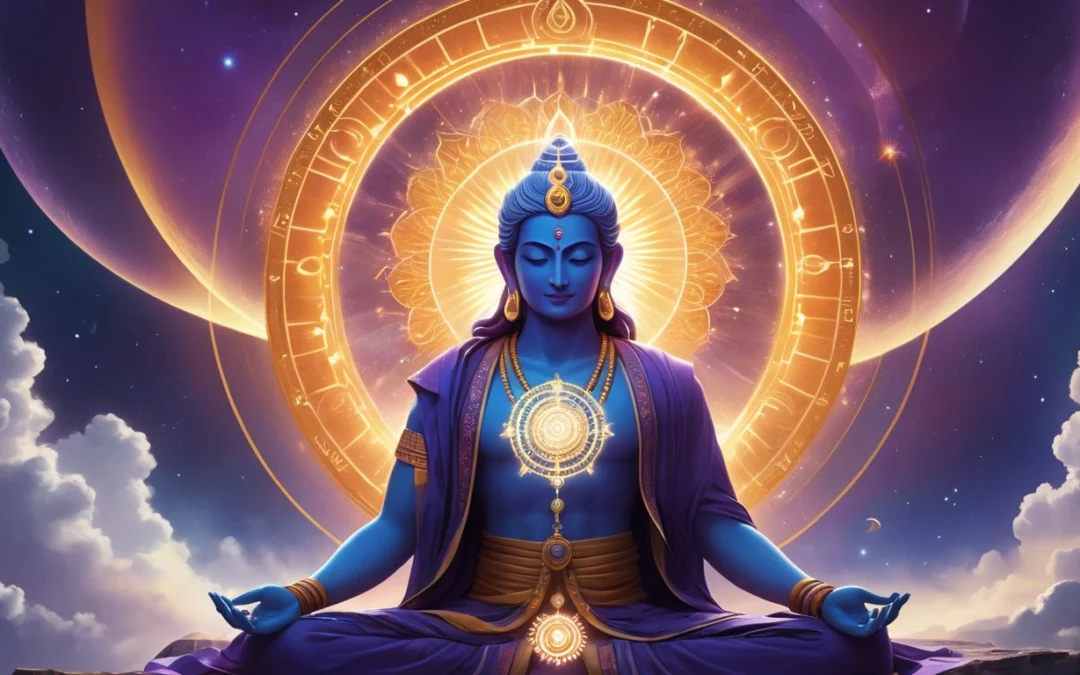Reincarnation in Hinduism:
Reincarnation, known as punarjanman in Sanskrit, is a fundamental concept in Hinduism that describes the soul’s cyclical journey through birth, death, and rebirth. This cycle, termed saṃsāra, is influenced by one’s actions (karma) and continues until the soul achieves liberation (moksha), freeing itself from the perpetual loop of existence.
Reincarnation in Hinduism is not merely a spiritual phenomenon but a moral mechanism that encourages ethical living. The belief is rooted in the idea that one’s actions in a given lifetime directly influence the conditions of their future existence. This cycle of birth, death, and rebirth is governed by the law of karma, where every action has consequences that determine the soul’s next incarnation.
Key Concepts
- Atman: The eternal soul or self, which is part of the divine and undergoes reincarnation.
- Karma: The cause-and-effect relationship between actions and their consequences in future lives.
- Samsara: The cycle of birth, death, and rebirth that continues until the soul achieves moksha.
- Moksha: Liberation from the cycle of reincarnation, where the soul merges with the divine.
Understanding the Soul (Ātman)
At the heart of Hindu philosophy lies the belief in the ātman, the individual soul or self. The ātman is considered eternal, indestructible, and distinct from the physical body. It is this ātman that transmigrates from one body to another across lifetimes, gathering experiences and learning along the way. The Brihadaranyaka Upanishad elucidates this concept, portraying the ātman as the consciousness that governs a person’s vital functions. Sage Yajnavalkya, a prominent figure in the Upanishads, is among the earliest to discuss transmigration, emphasizing the soul’s journey beyond a single lifetime.
The Mechanism of Saṃsāra and Karma
The cycle of saṃsāra is intricately linked to the law of karma, which posits that every action has consequences that shape future experiences. Good deeds lead to favorable outcomes, while harmful actions result in challenges and suffering. This cause-and-effect relationship extends beyond a single lifetime, influencing the circumstances into which one is reborn. The Bhagavad Gita illustrates this process, comparing the soul’s transition from one body to another to a person changing worn-out clothes for new ones, highlighting the transient nature of the physical form and the enduring essence of the soul.
The Pursuit of Moksha
The ultimate goal in Hinduism is to attain moksha, liberation from the cycle of birth and death. This state of enlightenment is achieved through self-realization, understanding the true nature of the ātman as one with the ultimate reality, Brahman. The Upanishads and the Bhagavad Gita delve deeply into this pursuit, offering various paths to liberation, such as devotion (bhakti), knowledge (jnana), and disciplined action (karma yoga). Achieving moksha signifies the soul’s release from saṃsāra, culminating in eternal peace and unity with the divine.
Also read: Origin of Swastik
Diverse Philosophical Interpretations
Hinduism’s rich tapestry of philosophical schools offers varied interpretations of reincarnation and liberation:
- Advaita Vedanta: This non-dualistic school asserts that the individual soul (jiva) and Brahman are identical. The perception of separateness is due to ignorance (avidya). Liberation is achieved through realizing this fundamental unity, leading to freedom from saṃsāra.
- Dvaita Vedanta: In contrast, the dualistic approach maintains a distinct difference between the individual soul and the supreme being (Vishnu). Devotion and divine grace are deemed essential for attaining moksha, which is believed to occur after death (videhamukti).
- Yoga and Sankhya: These schools focus on practices like meditation and ethical living to purify the mind and attain self-knowledge, facilitating liberation from the cycle of rebirth.
Reincarnation in Hindu Scriptures
The concept of reincarnation is woven throughout Hindu scriptures:
- Vedas: While the earliest Vedic texts do not explicitly mention reincarnation, they introduce the idea of punarmṛtyu (re-death), suggesting an early contemplation of cyclical existence.
- Upanishads: These philosophical treatises delve into the nature of the soul and its journey, discussing the impermanence of the physical body and the eternal nature of the ātman. They emphasize self-realization as the key to liberation.
- Bhagavad Gita: This seminal text provides insights into the soul’s immortality and the process of rebirth, offering guidance on how to live a life that leads toward liberation.
Also read: 5 Forgotten Vedic God
Influence on Hindu Practices and Beliefs
The belief in reincarnation profoundly influences Hindu rituals, ethics, and societal norms:
- Ethical Living: Understanding that actions in this life affect future births encourages adherence to moral principles and duties (dharma).
- Rituals and Ceremonies: Rites such as shraddha (rituals for the deceased) are performed to ensure the soul’s smooth transition and favorable rebirth.
- Life Stages: The ashrama system delineates four stages of life (student, householder, hermit, and renunciate), guiding individuals toward spiritual growth and eventual liberation.
Final words:
Reincarnation in Hinduism offers a profound perspective on life, death, and the soul’s journey. It underscores the importance of living righteously, seeking knowledge, and striving for liberation. This cyclical view of existence not only shapes individual lives but also enriches the collective cultural and spiritual fabric of Hindu society.
Support us by purchasing from our Affiliate Links:
The Essentials Of Hinduism An Introduction To All The Sacred Texts
Disclaimer:
This blog is for informational purposes only and is based on Hindu scriptures and beliefs. Different traditions may have varying views on reincarnation, karma, and moksha. Readers are encouraged to explore further and consult spiritual teachers for deeper understanding.


Trackbacks/Pingbacks